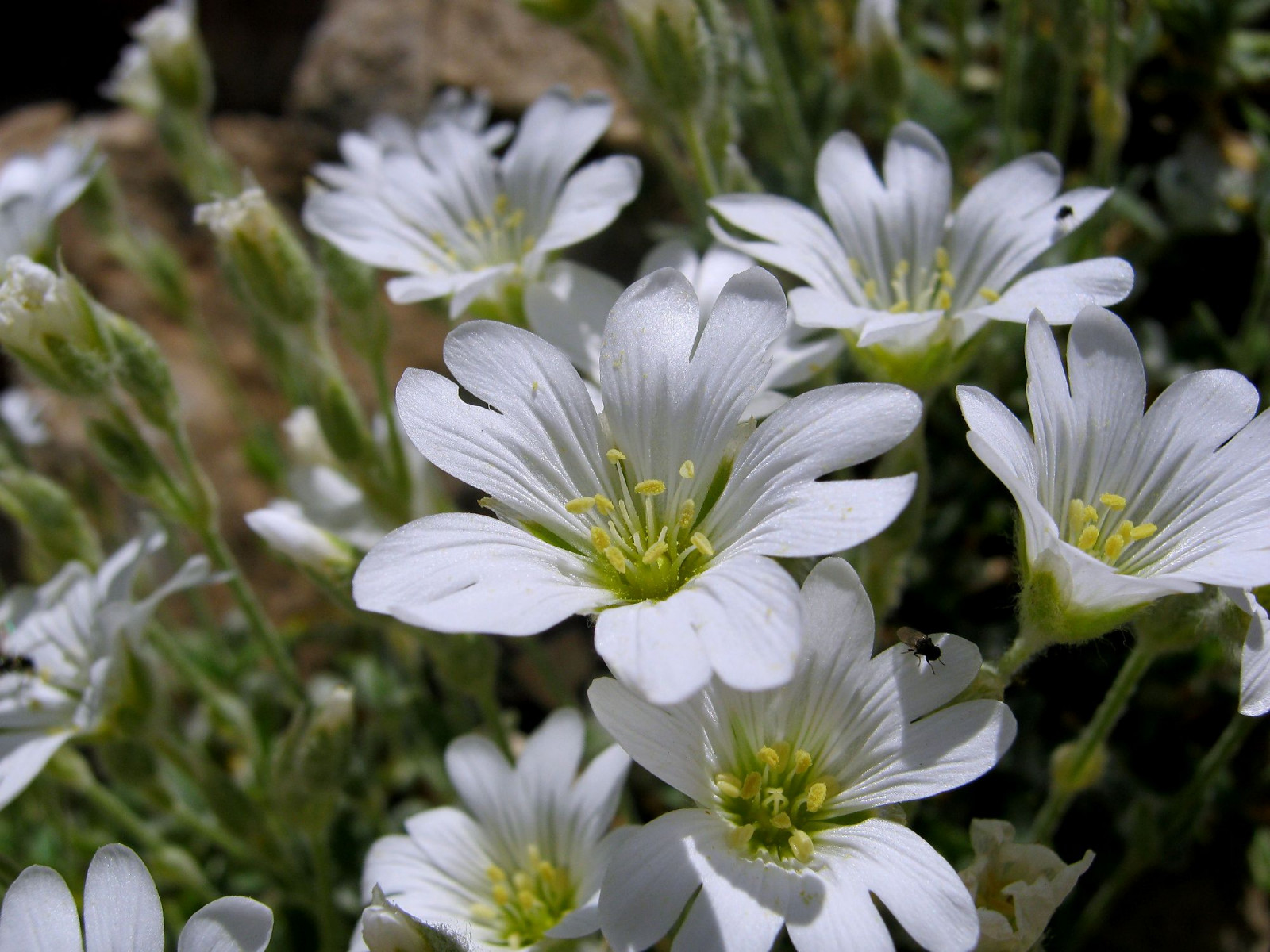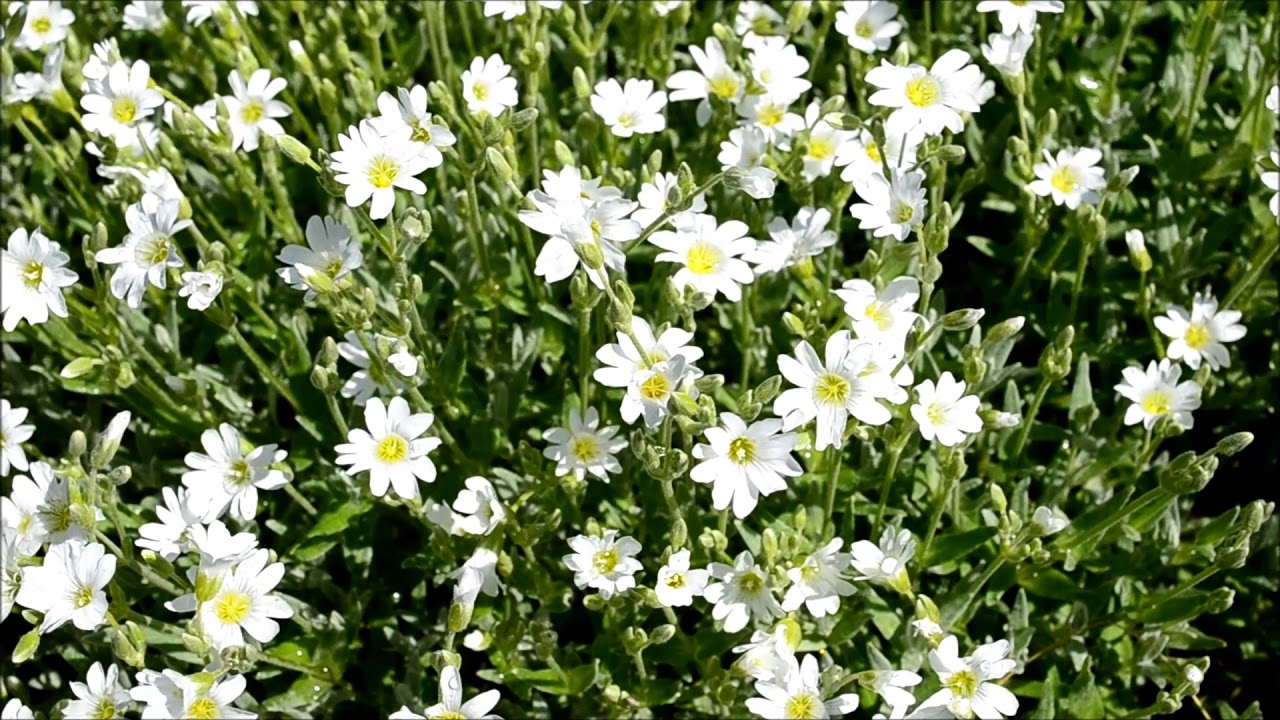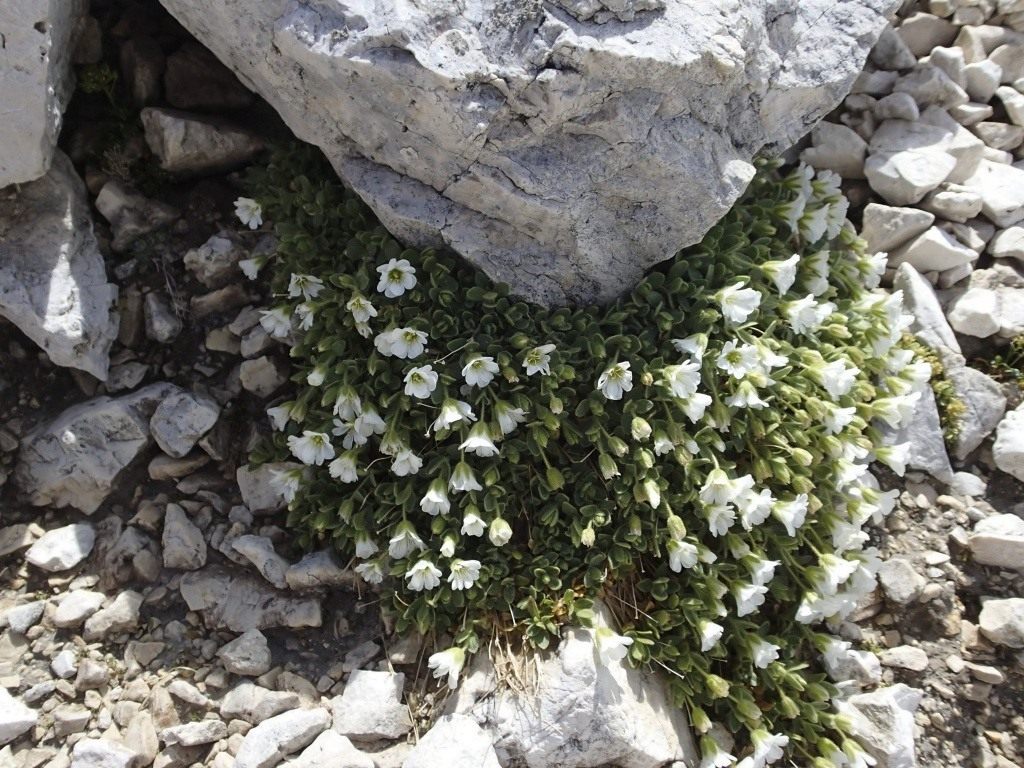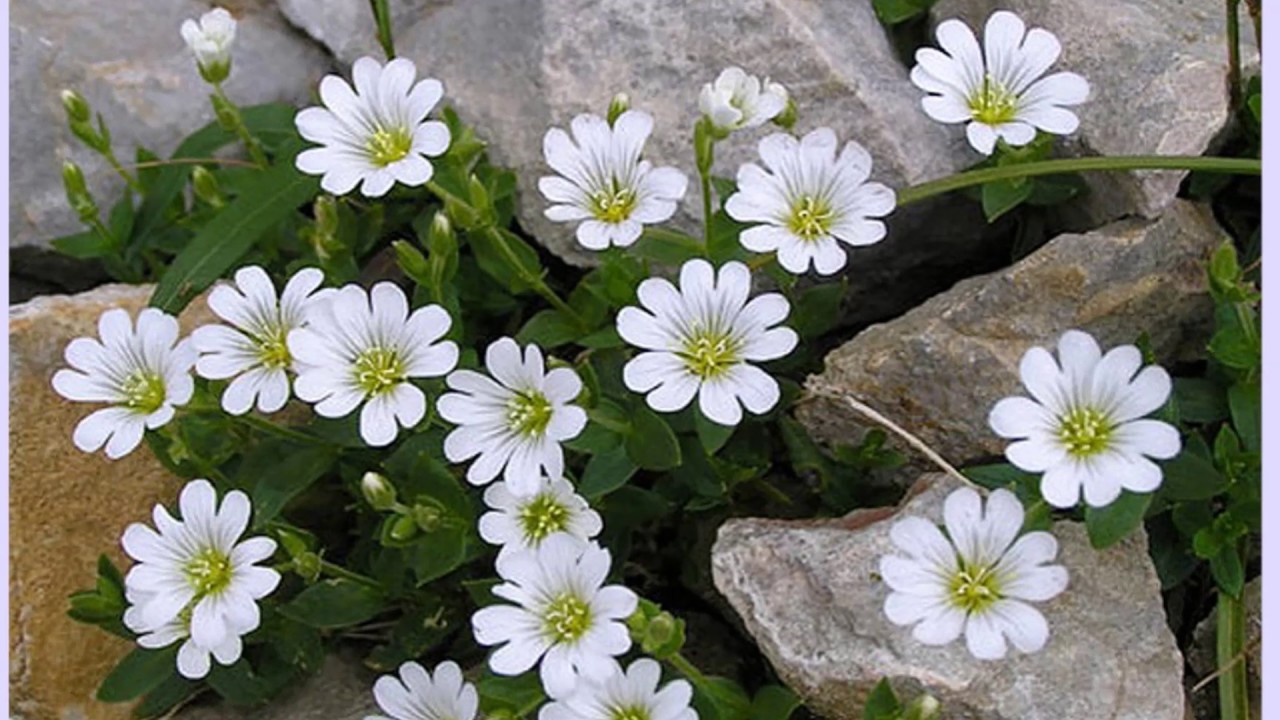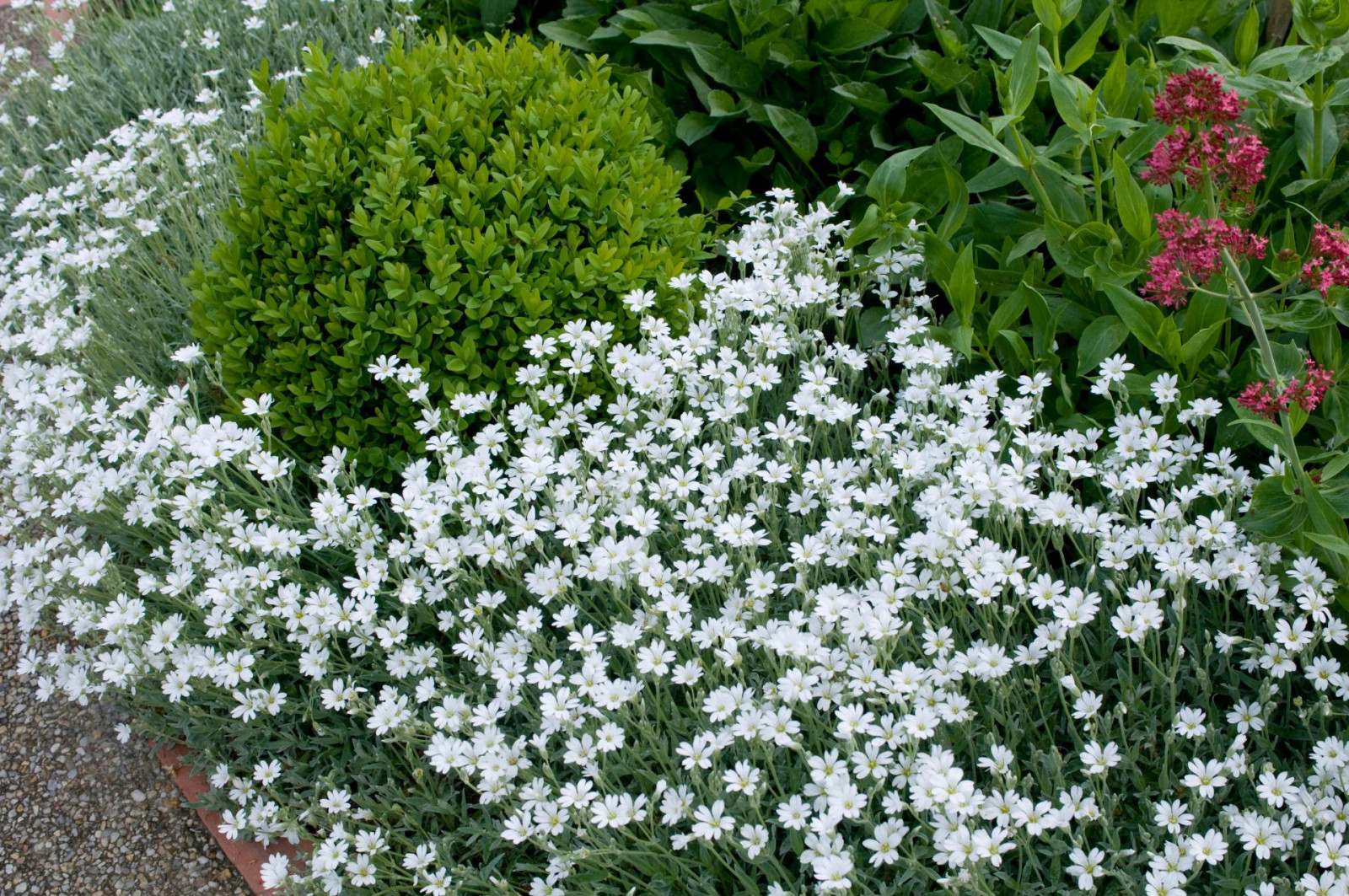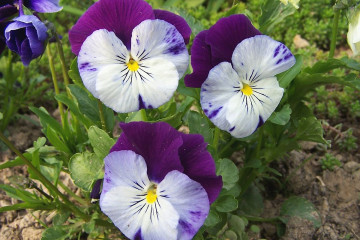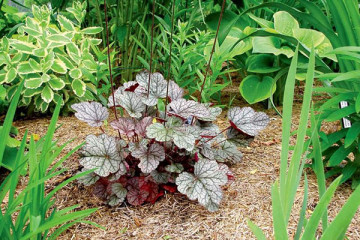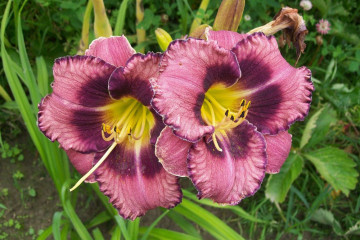Perennial Yaskolka - planting and care in the open field
Content:
The perennial chrysalis flower is an attractive and at the same time rather unpretentious plant that can decorate any suburban area. It is not surprising that many gardeners would like to know more about the common shrimp.
What does a perennial yaskolka look like?
Of course, before looking for a place for a plant and ordering seeds, you need to learn more about this plant. So a short description would be very helpful.
Experts classify the white yaskolka as a member of the Clove family. In total, it includes about 200 plant species. Among them there are both perennials and annuals. Therefore, the choice of a suitable variety should be approached as responsibly as possible.
For the first time this plant was officially mentioned in the writings of Karl Linnaeus himself - he carefully studied it back in the middle of the eighteenth century and gave the name cerastium.
But, of course, people noticed a discreet but beautiful plant long before the scientist. And in recent centuries, breeders have paid a lot of attention to it, creating new varieties with unusual characteristics.
Plant characteristics
To begin with, it is worth noting that Jaskolka is a herbaceous plant with a height of 5-30 cm. It has straight, ascending stems branched at the base. The trunk can be either bare or covered with barely noticeable pile.
The leaves are silver and light green, oppositely arranged.
The root system is powerful, lying at a shallow depth. It spreads very quickly, so when grown outdoors, you need to limit the area, if necessary, remove excess plants.
The flowers are small, about 2 cm, white. They consist of five petals, each of which is divided in two by a deep cut, which makes it seem that there are ten petals. An exception is the little-flowered chrysalis - its petals are not separated.
Classification of popular types of yaskolka
In general, it is rather difficult to enumerate all types of chippers - their number is measured in dozens. Therefore, it is worth mentioning at least the most interesting ones.
- Alpine lamb (Cerastium alpinum)
Stems are of medium height, about 10-15 cm, branched, straight. The leaves are grayish-green, oval in shape, covering the entire height of the plant.
Small flowers (no more than 2 cm) are collected in inflorescences of 4-5 in each.
- Jaskolka Bieberstein (Cerastium biebersteinii)
Also known as silvery shingle. One of the tallest plants in the family - up to 25 cm. Creeping shoots with narrow leaves. Fully covered with attractive white pile, which is why it got its second name.
- Felt chickweed (Cerastium tomentosum)
Compact bush - up to 60 cm in diameter. Leaves and shoots are covered with grayish fluff, reminiscent of felt. The flowers are especially small, no more than 1 cm.
This species grows very quickly and can occupy a huge territory.On the other hand, it is very useful, as it forms a carpet that protects the soil from being blown out and washed away.
- Soddy chickweed (Cerastium holosteoi)
Also known as common. It is a graceful bushes of thin stems up to 30 cm long. Leaves are small - from 3 to 10 mm wide and 3 cm long. It is the most common, as it is found in all regions from the tundra to the subtropics.
- White chickweed (Cerastium candidissimum)
Another name is snow-white yaskolka. A tall compact bush - up to 20 cm. The lower leaves are short, wide, and the upper ones are narrow, oblong. The flowers are quite large, very graceful, with exquisite petals.
- Ural shingle (Cerastium uralense)
The bushes are compact, but rather loose, reaching a height of 25 cm. The stems are bright green, ascending, but thin. The leaves are wide - up to 4 cm and up to 8 cm long.
The flowers are very beautiful, snow-white, the petals are cut about a quarter of the length.
- Field shingle (Cerastium arvense).
One of the tallest species is a shrub up to 45 cm tall. Shoots are thin, erect. Leaves can be either elongated or rounded. The flowers, like all chippers, are white, but the middle is yellow.
The cultivars that are most popular with horticulturists
On the basis of wild plant species, breeders have bred a huge number of varieties that can bloom longer and are an excellent decoration of the area near a private house.
It will be useful for every flower lover to know about the most interesting of them:
- Silver carpet - bred on the basis of the Bieberstein jassel. It is a compact bush covered with snow-white flowers. Creeping stems, up to 25 cm long.
- Columnae is a dwarf cultivar bred from the felt grip. With a height of only 10-15 cm, it forms a bush with a diameter of up to 40 cm. With proper care, the chrysalis creates a snow carpet that covers everything around.
- Crystal Falls is one of the most popular varieties. All due to the fact that in winter it does not die off, but continues to delight others with a green veil that wraps the earth. Height up to 20 cm, leaves are narrow, small.
How does the chickweed reproduce?
In general, there are two ways of reproduction - from seeds and by dividing the bush. Of course, an experienced florist needs to know both methods in order to be able to do exactly what is needed in a particular situation.
Growing from seeds
This method is more popular - the seeds are easy to buy in the store or order online. In addition, they can easily be stored for several months or even years without losing germination.
Landing in the ground can take place both at the end of April, when the ground has already dried up and warmed up enough, and at the end of October, shortly before the establishment of a cold temperature.
In any case, the plant will bloom only in the third year.
Seeds need to be poured with warm water, tinted with potassium permanganate for disinfection. Those that come up can be thrown away immediately - they will not sprout.
It is very important to protect plantings from direct sunlight in the first weeks of life - you can stretch transparent polyethylene. If this is not done, the bright May sun will simply dry out the small leaves and the plant will die.
Dividing the bush
By the fourth year, many bushes grow so much that they become less attractive - they are too stretched, lose their compactness and density. Therefore, they need to be transplanted and pruned.
Just at this moment, you can carefully divide the bush into several parts and plant each of them in a suitable place. In this case, in the summer or a maximum of a year later, the chickweed will bloom again.
Features of care in the garden
In general, the plant is almost as unpretentious as weeds. Therefore, when growing chickens, many simply forget about planting and leaving, and problems usually do not arise.But still, it will be very useful to know about certain nuances.
What conditions do Yaskolka like
Experts believe that the most suitable soil is nutritious, but very light. It is best to use a mixture of sand and humus - the root system develops quickly on it and the plant sprouts like a yeast.
But in the shade and even partial shade, you should not plant it. Tiny leaves need a lot of sun for the process of photosynthesis to be active. Therefore, a lack of light will lead to the fact that the plant will develop slowly, it may even wither and die.
Watering, mulching, loosening, top dressing
Watering is necessary only in very dry summers. The fact is that the roots of the shrub grow over a large area, located at a shallow depth. Therefore, even a small amount of moisture, obtained from dew and fog, is quite enough to "get drunk".
But mulching will definitely not hurt. As mulch, you can use both organic matter (peat, humus) and fine gravel. In any case, it will be more difficult for weeds to develop, and moisture will evaporate from the surface of the ground much more slowly.
Loosening also needs to be done regularly - at least once or twice a month. The roots need a lot of air, and on heavy soils, the plant can become seriously ill.
Top dressing is not needed at all - as mentioned above, the root system is very powerful and receives nutrients from a large area. Moreover, if mulching is performed using organic matter, which already acts as a fertilizer.
Transfer
Do not forget about the transplant. It must be performed at least once every 5-7 years in order to return the decorative effect to the plant. To prevent this from happening, the bushes are carefully dug, divided and transplanted.
When and how it blooms
For most varieties, flowering begins in May and this pleasant process lasts for a whole month. All this time, the flower beds are literally covered with a chic carpet of small but graceful flowers. However, there are also varieties (for example, Crystal Falls) that begin to bloom later - in early June.
The flowers are quite small - almost always about 15-20 mm. But they cover the bushes really densely, for which the plant is highly appreciated by experienced flower growers and summer residents.
Possible growing problems
Of course, if the reader is interested in a perennial yaskolka, planting and leaving is only half the battle. You also need to know about additional factors that harm the plant.
Fortunately, it is of no interest to insect pests. But infectious diseases may well cause serious harm. Most often they arise due to high humidity - spots appear on the leaves, they begin to dry out or rot. An urgent need to reduce the intensity of irrigation, and if necessary, provide drainage - removal of excess water. Treat plants with fungicides - usually this quickly gives the desired result.
Use in landscape design
The possibilities for using chickweed in gardens are enormous. The flower is perfect for decorating rocky gardens, borders. Low varieties are ideal for creating rocky flower beds and alpine hills.
But for this it is desirable to allocate a large area - at least a few square meters. Single bushes do not look very attractive.
Having studied the issue from all sides, each florist - a beginner or an expert - can easily grow a jaskol on his site and demonstrate to everyone around its beauty and sophistication.
